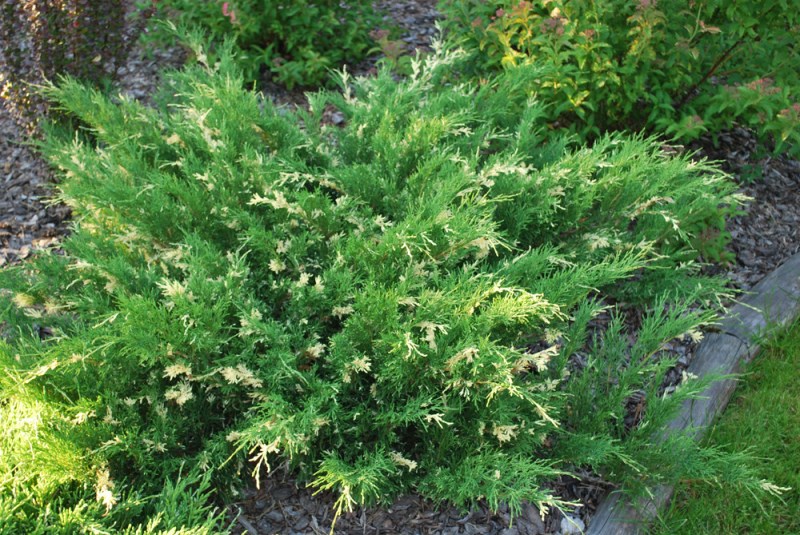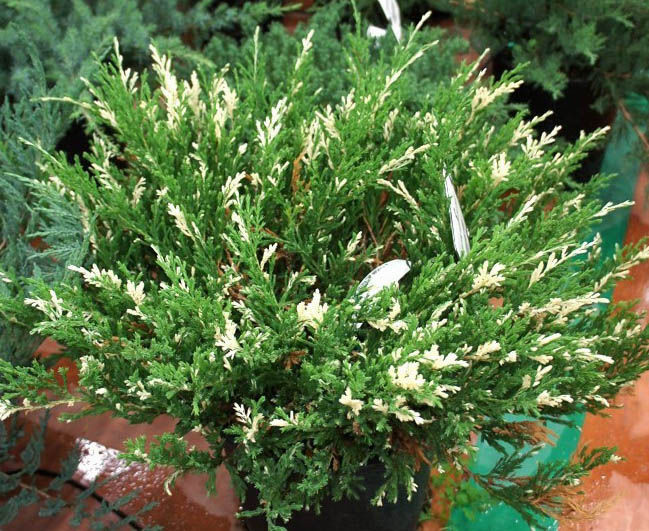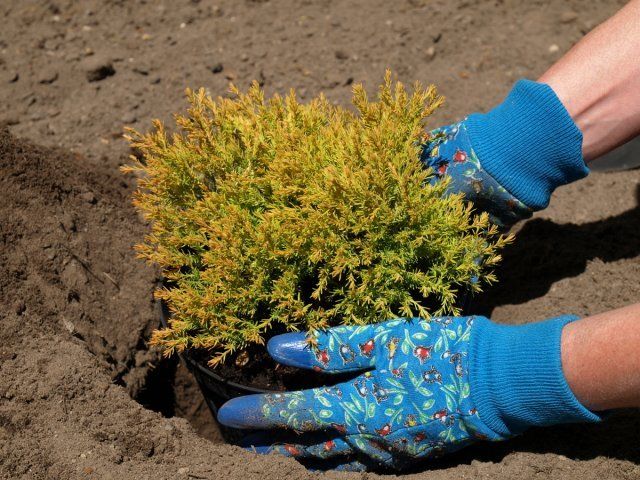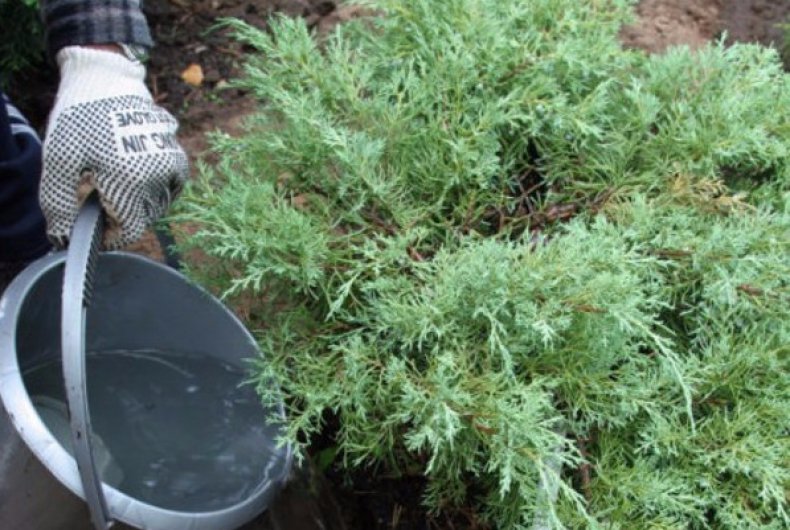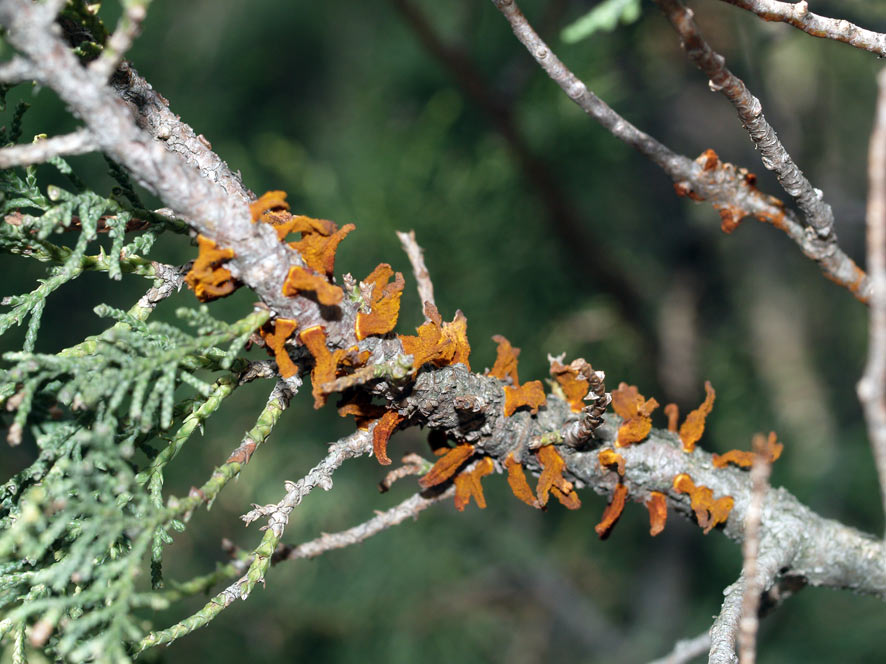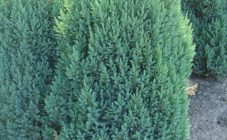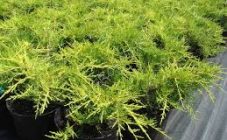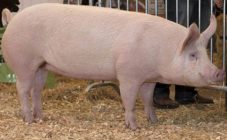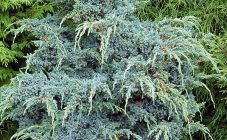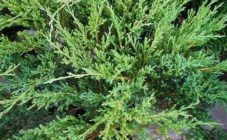Content:
The juniper will decorate any garden. This evergreen crop with needle-like leaves serves a useful function: it disinfects the air. There are no pathogenic organisms near the plant, and the air is crystal clear. Juniper Variegata especially disinfects the air. In addition, this variety repels harmful insects. Variegata has a compact size and fits perfectly into a flower bed or landscape composition with stones.
Characteristic features of culture
- Juniper is an evergreen coniferous plant. This is a representative of the huge Cypress family. The popular name of the culture is veres.
- Depending on the species, junipers are both shrubs and trees. There are dwarf junipers in the form of carpets creeping along the soil, as well as trees with a 20-meter trunk and towering above the ground.
- The twigs of the plant look unusual. They are decorated with leaves, pleasant to the touch, in the form of needles or needles, covered with miniature scales.
- A distinctive feature of the plant is a pleasant spruce-resinous smell.
- The culture releases volatile substances - phytoncides. They have antimicrobial properties and disinfect the air. At the same time, heather releases phytoncides much more than other conifers.
- The plant is not afraid of cold weather. In nature, it grows mainly in the Northern Hemisphere.
- Veres is a long-liver. It can develop over hundreds of years.
- Juniper is an indispensable element in garden decoration.
- In gardening, culture is unpretentious. Even a novice gardener can grow a juniper bush or tree.
- The characteristic of heather indicates that it is most often grown in an open area, in apartments it is uncomfortable.
Variegata variety
Juniper Variegata belongs to the Cossack species. Cossack Veres as a type of flora can be seen in forests and mountains in all parts of the largest continent of Eurasia. This plant became the progenitor of new varieties that fit perfectly into the atmosphere of a well-kept garden. Breeders work with a huge variety of juniper groups. Among them was the Cossack juniper Variegata.
Juniper Cossack Variegata description begins with the information that it is a beautiful horizontal dwarf. One of the best representatives of the species. Its shape is boner-like. The plant is quite dense and compact, especially if it grows in the sun.
Like other Cossack junipers, Variegata grows extremely slowly. For 1 month, the plant can grow only 0.5 mm of tissue. The height of a young plant, which is 3 years old, is only 20-26 cm. At this age, the culture is overgrown with a crown, the diameter of which is 15-22 cm. For several decades, Variegata takes the form of a meter-long shrub with a lush crown covered with delicate scales. The tops of the shoots bend and stretch towards the sky. Small cones-fruits. Their color is brown. They are practically invisible through the thickets of the crown.
The peculiarity of the Cossack variety Variegata is the unusual color of the needles.She is emerald green with splashes of sun. Spots of cream in color with a yellow tint. Crohn has a bright, thick aroma. It becomes more resinous and richer if you don't just walk up to the bush, but crush a couple of twigs in your hands. The smell is due to the presence of essential oil. Owners of a decorative type should be careful - there is a small amount of toxic substance in the oil.
Cossack Variegata is a bit like the Chinese Juniper Expansa Variegata. They are both undersized and both have light blotches on the branches. However, the Expansa Variegat juniper is distinguished by thorny needles, and it is not recommended to plant it in the northern regions, in central Russia and in the Urals due to its low frost resistance.
Landing
The plant is usually planted with seedlings. There is a variant of seed propagation, but this process is too complicated. It provides for long-term stratification. It is best for a summer resident to buy a high-quality Cossack Variegat juniper seedling. The recommendation for the age of the planting material is 3-5 years. Seedlings are sold both with a closed root system and an open one. Planting can take place both in spring and autumn. The soil should be moderately warm, moist. Variegata grows best in open areas with ample sun. In the shade, its crown becomes loose and not fluffy.
Detailed instructions:
- The garden bed, which will be decorated with juniper, can have any soil. Variegata is not whimsical. However, it shows the best growth on fertile, light, loose soils, where there is enough turf, peat and sand. The acidity should be neutral.
- If the root system is closed, then the root is taken out of the container and placed in a bucket of water for several hours. Next comes the treatment with a growth stimulant.
- A large hole is dug for a seedling - about 40-65 cm deep and 30-60 wide, depending on the size of the planting material. A drainage layer is laid at the bottom. It is allowed to be made of rubble, stones, broken bricks. A pillow of ordinary sand is poured on top. A seedling is placed on it.
- There is no need to bury the plant in the ground. The gardener needs to make sure that the root collar is visible and is just above the ground.
- After the planting is completed, the near-trunk circle is spilled with water.
- If the planting was organized in the fall, then for the winter the young plant is covered with non-woven material.
Care
The plant will not require a lot of time from the owner of the site. Crop care is not laborious. Among the main events:
- Watering;
- Weeding;
- Mulching;
- Top dressing;
- Pruning;
- Pest and disease control.
Watering, weeding and mulching
Juniper Cossack Variegata calmly tolerates drought, but to accelerate growth it is watered once every 30 days. It is allowed to irrigate the shrub with clean warm water every week from a spray bottle. But it is recommended to do this after sunset. After watering, the land under the bush is weeded and mulched with dry leaves, peat, sawdust.
Top dressing
One or two additional fertilizing a year is enough for a culture. The procedures are performed at the very beginning and at the end of spring. A nitroammofosk is placed under the bush. Another good universal fertilizer is Kemira.
Pruning
The variety tolerates pruning well. But here it is important for the gardener not to overdo it. The first 3 years after planting, the juniper is only slightly trimmed. Only old and dried branches are removed. After 3 years spent on the site, the plant is allowed to give the shape that the landscape designer intended.
Fight ailments and insects
The disease to which the variety is susceptible is brown snow mold (Schütte brown). The fallen needles are burned, the damaged shoots are cut off. The plant is sprayed with Bordeaux liquid.
The plant can become infected with rust that comes from rowan or pear. As a preventive measure, Cossack juniper Variegata is planted away from these trees. If rust is already noticeable, then all damaged shoots are removed from the bush. After it is treated with Topaz. This remedy is used twice a season.
Insects do not like the smell of juniper, therefore they rarely attack an elegant shrub. However, it does happen. The most courageous pest that is not afraid to attack the representative of Cypress is the spider mite. To combat it, acaricides are used:
- Anti-mite;
- Neoron;
- Apollo;
- Fitoverm;
- Omite, etc.
Another pest that spoils juniper is ants. These insects carry other parasites on themselves, for example, aphids, worms. As soon as the gardener saw the ants crawling through the crop, he immediately sprays the bush with Thunder, Ant, Fufanon.
Landscape decoration
Garden space design using variegat juniper can be very different. The variety is recommended for both mass plantings and compositions, and for a single location in the garden. If you plant Variegata in a composition with other varieties, then it will stand out for its variegation and refresh the appearance of the plantings.
The shrub will look advantageous next to the bushes of scarlet and burgundy roses, barberry. If the Cossack Variegata is planted under a tall coniferous tree, then such a picture will make even a compact garden plot more atmospheric and comfortable.
Experts who have been studying landscape design for a long time recommend using Variegata in places where you need to beat the slope of the earth, sharp corners or tiered compositions. Emerald needles with sun spots will perfectly hide all the imperfections of the territory, presenting it in a favorable light.
Gardeners who planted Variegata juniper in their country house do not regret this choice. According to summer residents, the plant, although slowly, but steadily grows. Care is simple and consists in several dressings, 3-4 waterings per season and other simple manipulations. However, it should be remembered that the plant is poisonous. It is better not to purchase it for the garden, which is often visited by children.
